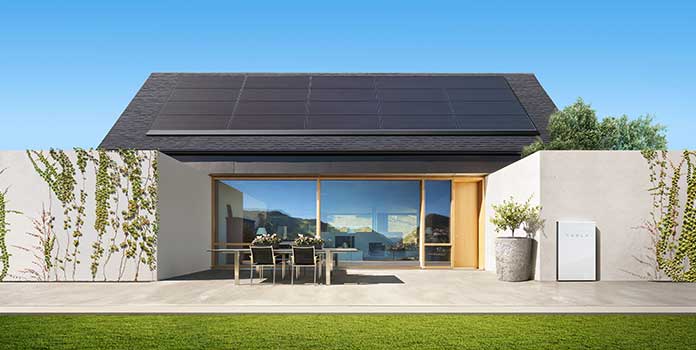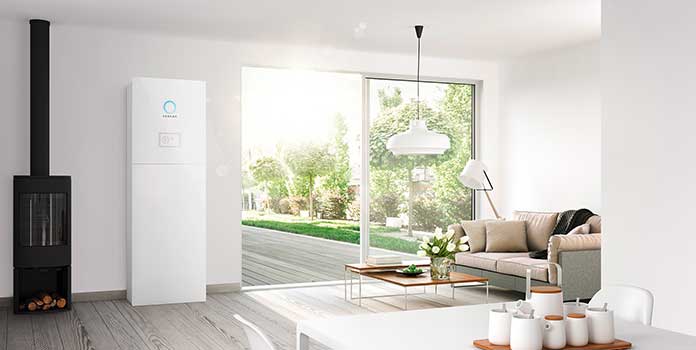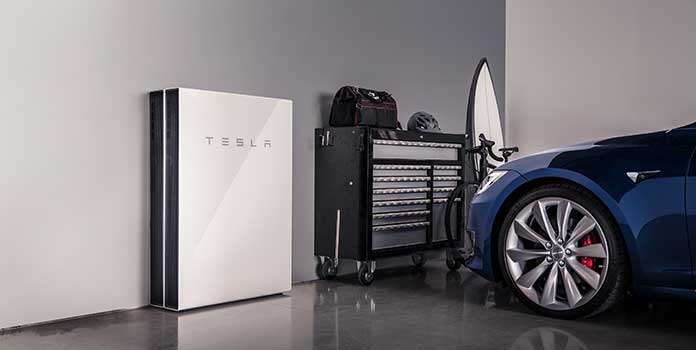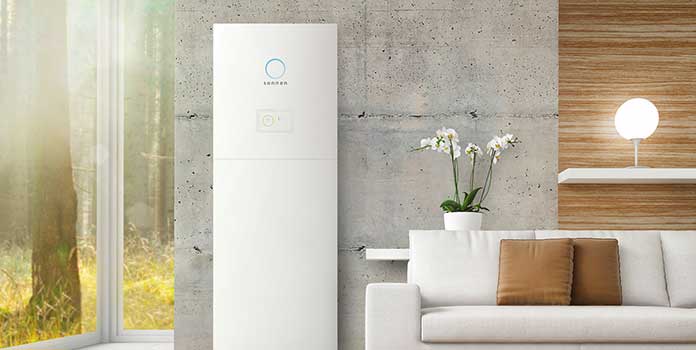Could You Benefit from Solar Panels with Battery Backup?

Battery backup can be a good investment, but watch out for high costs.
Energy storage is the hot thing in the electricity industry right now, after Tesla introduced the Powerwall and with big players like Nissan, Panasonic, and BMW getting into the storage game.
And it really is pretty exciting. When you couple a battery system with solar panels, it seems like you’d be an unstoppable, off-grid, self-sustaining force of nature. With all this interest from big companies, you’re probably wondering if solar panels with battery backup make sense for you.
Well, we’re here to set the record straight and answer that question. And here it is in a nutshell: For most homeowners in the US, solar+batteries probably doesn’t make sense. But, if you’re in an area with high electricity rates and/or are on a time-variant utility pricing (like a time-of-use rate), or have special circumstances where you absolutely need electricity 24/7, battery backup just might make sense.
Let’s look at when adding batteries to your solar installation would make sense – and when it wouldn’t.
For grid-connected homes, it’s all about shifting peak use

Most of us live in a grid-connected home (ie we get our power from the utility), so you might be wondering exactly how a grid-connected solar installation benefits from battery backup. That’s a reasonable question – after all, you’ve already got easily available electricity around the clock.
Of course, there’s the benefit of having backup power when the grid goes down. But the real draw of battery back-up is the financial perks. For grid-connected homes, it’s all about storing cheap solar energy when the sun’s out, then using that electricity later in the day, during peak times when utility prices are highest.
Many utilities, including California’s big three (PG&E, SCE, and SDG&E) now offer or automatically place residential customers on time-of-use rates.
Under TOU rates, the price of electricity increases and decreases at specified points throughout the day, with customers paying more when demand is high – typically in the morning and late afternoon (when people are at home using all their appliances). Prices then decrease at night and midday when everyone is at work.
These TOU prices can change drastically throughout the day. PG&E in northern California, for example, charges TOU customers about 40% more from 3PM to 8PM than at other times of the day. Prices are also higher during the summer, when everyone is running AC to keep cool and energy is at a premium. Their rates break down as such:
- Summer: $0.25/kWh during off-peak, $0.36/kWh on-peak
- Winter: $0.20/kWh during off-peak, $0.22/kWh on-peak
If you’re a smart homeowner on a TOU rate, you try to avoid using energy during those peak times each day, as it’s much, much more expensive!
But, if you’ve got solar panels with battery backup, you can store up cheap electricity in your battery bank while your solar installation is pumping out power midday, then pull from that bank of electricity during those high-priced peak hours, allowing you to avoid that costly electricity without even changing your lifestyle!
To benefit from battery storage, you don’t even actually need a solar installation. You could simply install a battery storage system and charge it up when utility electricity is cheapest – at night for example – then pull from that storage during peak times, allowing you to successfully avoid those high prices.
What about back-up power for grid-connected homes?

Like we mentioned above, some homeowners are also interested in energy storage as a backup system in case the electrical grid goes down. Maybe the idea of sitting in the dark doesn’t sound fun, or you have life-supporting devices that need to constantly be running.
Either way, most of the larger battery backup systems (like the Tesla Powerwall) can function even when the grid goes down, making you a little mini off-grid island in a sea of darkness. Backup functionality isn’t a given for every energy storage system, so be sure to ask about this capability before making any decisions.
Are solar panels with battery backup a good financial decision?
For homeowners looking to save money by shifting their energy use, cost-effectiveness is the real question. Will you eventually save enough money by adding batteries to your solar installation to warrant the high initial price? Let’s run through some rough calculations to give us an idea:
Under the PG&E rates above, you’d pay $0.36 per kWh during peak times in the summer.
An average 5kW solar installation in California costs about $12,623 (after the 30% federal tax credit) and produces about 177,583 kWh over its 25 year lifespan. That works out to $0.07 per kWh.
According to Tesla, the Powerwall costs around $8,000 after installation, though installation costs fluctuate greatly depending on your location and complexity of installation. We’ll add an extra $1,000 to the cost just to be sure, for a total of $9,000. (For the Californians out there, the state also offers a tax credit for energy storage devices through their Self Generation Incentive Program, but we haven’t included those benefits here in our calculations.)
The Powerwall holds 13.2 kWh, can be discharged down to 80% of its total capacity, and is warrantied for 10 years. If you use all your Powerwall’s storage each day for 10 years, you’re looking at 38,544 kWh of energy stored in total, equating to $0.23 per kWh.
Adding up your solar costs ($0.07/kWh) and Powerwall storage costs ($0.23/kWh) gives you a total cost of $0.30 per kWh – a good deal lower than PG&E’s summer peak price, but quite a bit more than their winter peak.
So depending on your own installation costs as well as your energy use (could you really use your Powerwall’s total capacity every day during peak times? Probably not), battery storage might make financial sense for you. And, while storage is still just a tiny stick in the large forest of the electricity industry, many homeowners in states like California and Hawaii with high electricity prices are already finding batteries a financially viable option.
In most states though, battery storage still doesn’t make financial sense. Consider that the average electricity rate across the US is $0.13 per kWh and the fact that most homeowners aren’t on a TOU rate or other variable rate schedule. Like solar over the last 10 years though, as battery prices continue to fall and electricity prices increase, it’s likely just a matter of time until it makes sense for everyone.
Off-grid systems need storage to be useful

If you’re off-grid or planning to go off-grid, batteries are a necessary part of your energy ecosystem. Your solar panels produce energy during the day, but without batteries to store some of the power, you’ll be left completely in the dark when the sun goes down.
Calculating cost-effectiveness for off-grid systems is quite different from grid-connected homes. If you’re on the grid, you’re comparing your total solar+battery cost to the utility. Not so with off-grid homes, as you have no utility to compare to. Instead, it’s simply a question of ‘Do I want electricity or not?’ Cost-effectiveness comes down to sizing your system appropriately and comparing different equipment and installers to find the best price.
While inverter-battery combos like the Tesla Powerwall and sonnenBatterie make energy storage simple for grid-connected homes, off-griders typically prefer to keep the two separate. This allows you to only buy exactly what you need – and nothing more – saving you money and allowing you to tweak your system to your exact specs.
There are numerous kinds of batteries and inverters to choose from, so be sure to research and talk to your installer before making any decisions. And, the same goes for grid-connected homeowners as well.
The Bottom Line
Adding batteries to your solar installation can be a good decision, but they’re still too high priced for homeowners in much of the country. If you live in an area with high electricity rates, it just might make sense. As every home is different, our best advice is to talk to a handful of installers for information on your area, utility, and typical costs.
Want to read more about batteries and energy storage? Check out our other articles below!
- Include Batteries with Your PV to get a 30% ITC for Storage
- What’s the Best Deep-Cycle Battery for Solar?
- Solar Batteries Lifespan: How Long Will Your Deep-Cycle Last?
We hope you found this quick overview useful. If you have any questions or thoughts on battery backup systems, ask away in the comments!
Image Credit under CC License via Tesla Press Kit – 1, 3, and Sonnenbatterie Press Media – 2, 4
